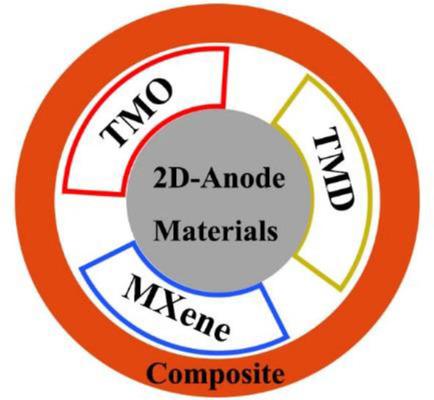当前位置:
X-MOL 学术
›
ChemElectroChem
›
论文详情
Our official English website, www.x-mol.net, welcomes your
feedback! (Note: you will need to create a separate account there.)
Two‐Dimensional Metal‐Containing Nanomaterials for Battery Anode Applications
ChemElectroChem ( IF 3.5 ) Pub Date : 2020-05-27 , DOI: 10.1002/celc.202000440 Yuning Chen 1 , Lidong Li 1 , Lin Guo 1
ChemElectroChem ( IF 3.5 ) Pub Date : 2020-05-27 , DOI: 10.1002/celc.202000440 Yuning Chen 1 , Lidong Li 1 , Lin Guo 1
Affiliation

|
Secondary batteries, as portable energy storage and supply devices, are becoming an attractive research field that is drawing a lot of attention. Selection of electrode materials plays a crucial role in the battery performances. However, most bulk materials have a lot of limitations when used as battery anodes for lithium‐ion batteries (LIBs) and sodium‐ion batteries (SIBs). Recently, two‐dimensional nanomaterials (2D materials) have been fabricated to address these problems. The high specific surface area of 2D materials can facilitate the electrochemical process during charge–discharge cycles. Therefore, anode materials with expected performances can be designed and be synthesized. In this Review, we summarize the recent development of metal‐containing 2D nanomaterials for battery anode applications. The relation between 2D structure and electrochemical performance of materials have been presented. Additionally, existing problems and possible solutions have also been discussed.
中文翻译:

用于电池阳极应用的二维含金属纳米材料
作为便携式能量存储和供应设备的二次电池正在成为吸引人们广泛关注的有吸引力的研究领域。电极材料的选择在电池性能中起着至关重要的作用。但是,大多数散装材料在用作锂离子电池(LIB)和钠离子电池(SIB)的电池阳极时有很多限制。最近,已经制造了二维纳米材料(2D材料)来解决这些问题。二维材料的高比表面积可以促进充放电循环中的电化学过程。因此,可以设计并合成具有期望性能的负极材料。在这篇综述中,我们总结了用于电池负极应用的含金属二维纳米材料的最新发展。提出了二维结构与材料电化学性能的关系。另外,还讨论了现有问题和可能的解决方案。
更新日期:2020-08-03
中文翻译:

用于电池阳极应用的二维含金属纳米材料
作为便携式能量存储和供应设备的二次电池正在成为吸引人们广泛关注的有吸引力的研究领域。电极材料的选择在电池性能中起着至关重要的作用。但是,大多数散装材料在用作锂离子电池(LIB)和钠离子电池(SIB)的电池阳极时有很多限制。最近,已经制造了二维纳米材料(2D材料)来解决这些问题。二维材料的高比表面积可以促进充放电循环中的电化学过程。因此,可以设计并合成具有期望性能的负极材料。在这篇综述中,我们总结了用于电池负极应用的含金属二维纳米材料的最新发展。提出了二维结构与材料电化学性能的关系。另外,还讨论了现有问题和可能的解决方案。











































 京公网安备 11010802027423号
京公网安备 11010802027423号